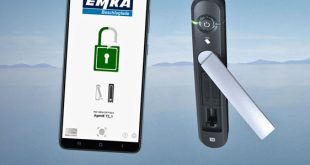Andy Fitzer of Hitaltech explains why investing development time in your enclosures creates finished products that function more effectively, can be installed more easily, and deliver better returns
Imagine asking a shop assistant for a bag that adequately holds your new purchase and being told that they don’t have one the right size. Annoying isn’t it? I have had that happen to me a few times and always wondered why stores don’t consider what a customer will do with their larger purchases; or even why when buying several small items, you are given an over-sized bag!
It seems quite simple really that these things be considered in advance. That goes for a lot of things in life, and in my field, I know the frustration of a customer who cannot find an enclosure to fit their requirements. This is why we encourage communication from the beginning of the design process.
 Enclosures come in all shapes and sizes – which is handy because so do printed circuit boards and the vast array of components which make up a finished product. And just as your supermarket packing has a certain order, (eggs and bread on top), so the components in your enclosures need careful arrangement if they’re to do the job you need them to do, in your finished product.
Enclosures come in all shapes and sizes – which is handy because so do printed circuit boards and the vast array of components which make up a finished product. And just as your supermarket packing has a certain order, (eggs and bread on top), so the components in your enclosures need careful arrangement if they’re to do the job you need them to do, in your finished product.
A component in its own right
A well-designed enclosure is far more than a box to house the parts. It could be protective shell, product enabler, assembly support and wiring instructions all rolled into one – if you spend as much time up front with the enclosure as you do with everything else.
There is a tendency to think of the enclosure at the checkout phase of the design process, in the same way as the plastic bag in the supermarket. But it’s so much more than that. It’s a component in its own right, deserving, in my view, of the same innovation and design approach as all the other components.
Design synergy
The requirement to think again about enclosures is clearest when your product involves connectors and terminal blocks. We can spend months, or even a year, specifying, designing, refining and miniaturising connectors and terminal blocks that will satisfy the needs of a particular product.
 By their very nature, new connectors in new products are unlikely to be a natural fit for standard enclosures. Miniaturised components may result in the need for a smaller enclosure. You may need more or different openings. The connectors may vary. So there’s a real synergy between connector design and the design of the enclosure.
By their very nature, new connectors in new products are unlikely to be a natural fit for standard enclosures. Miniaturised components may result in the need for a smaller enclosure. You may need more or different openings. The connectors may vary. So there’s a real synergy between connector design and the design of the enclosure.
Brainstorming the box
It doesn’t stop there. By colour-coding connectors, printing design artwork and adding wiring legends to the enclosure fascia, you create a product that actively aids assembly. It makes wiring foolproof, speeds production times and reduces the risk of product failure.
Full-colour digital, tampon, and laser printing, enables you to add logos and branding too, turning a humble enclosure into a brand advocate.
Of course, it doesn’t happen by accident. The latest bespoke enclosure we’ve been involved with, has taken a year to reach production stage; but that’s because every connection, terminal block and wire has been considered and accommodated in a way that results in a better performing product that is easier to assemble. That’s an investment that results in money saved.
Do you always need to go to such lengths? Of course not – standard enclosures for standard components will always have their place. But when you want to create something new, you’re not reaching a product’s full potential by using an off the shelf enclosure.
 CIE Components in Electronics
CIE Components in Electronics



